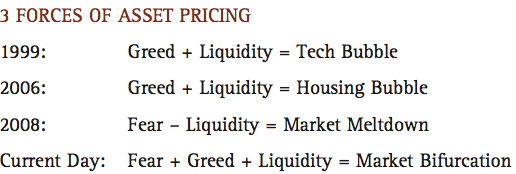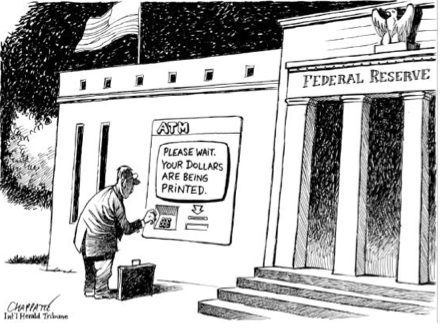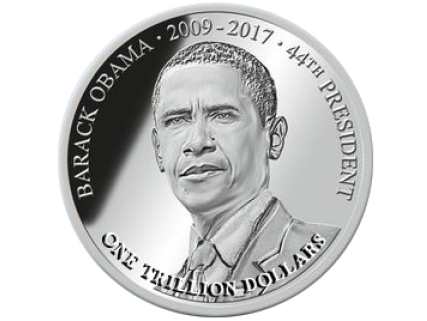Personal Finance
 The call for this week: The indices, in the short-term, are entirely out of internal energy and over-bought. To me, that counsels for caution despite the half-hearted Dow Theory buy signal generated by last Friday’s new reaction closing high by the Industrials, which confirmed the D-J Transports sprint to new all-time “highs” last week. Whatever happens in the near-term, there is nothing to suggest the path of least resistance is not higher over the intermediate and longer-term. Therefore, I would accumulate favored stocks, as well as the indices, on any ensuing pullbacks.
The call for this week: The indices, in the short-term, are entirely out of internal energy and over-bought. To me, that counsels for caution despite the half-hearted Dow Theory buy signal generated by last Friday’s new reaction closing high by the Industrials, which confirmed the D-J Transports sprint to new all-time “highs” last week. Whatever happens in the near-term, there is nothing to suggest the path of least resistance is not higher over the intermediate and longer-term. Therefore, I would accumulate favored stocks, as well as the indices, on any ensuing pullbacks.

Value matters. It seems simple but the market is far from convinced of the concept right now. The market is enthralled by stocks that are beating estimates and has no patience for companies facing any type of turbulence. The market is being pushed, pulled, and generally bullied by the forces of fear, greed and liquidity.

The current combination of greed, fear and liquidity, however, has meant certain assets such as government bonds, high quality corporate bonds and “quality” stocks are hitting multi-year highs, while other assets are hitting multi-year lows. This bifurcation of asset values is evidenced by certain areas of the market defying gravity (Treasuries) and being priced for perfection (U.S. Mega Caps) whereas other market segments are declining precipitously (natural resource related companies) and are priced to never recover (U.S. coal companies). Market participants exacerbate this volatility by focusing on day-to-day news, such as macro headlines, political news and quarterly earnings announcements, rather than long- term fundamentals.
In these uncertain times Tradewinds knows the importance for investors to keep calm and carry on! Investors must remain objective, 1) recognize the massive amount of liquidity being pumped into the system, 2) avoid overvalued areas of the market where there is either an abundance of greed or a lack of fear and 3) take advantage of opportunities where others are fearful due to temporary challenges. These currently “unpopular” investments could protect wealth by providing exposure to scarce assets and sustainable franchises that will retain value.
LIQUIDITY

…..read pages 2-7 HERE

 Something Big Is Happening
Something Big Is Happening

 The birth, and the apparent death, of the trillion dollar platinum coin idea may one day be recalled as a mere footnote in the current debt crisis drama. The ultimate rejection of the idea (which was to use a loophole in commemorative coinage law to mint a platinum coin of any denomination) by both the President and the Federal Reserve seems to offer some relief that our economic policy is not being run by out-of-touch academics and irresponsible congressmen. In reality, our government has been creating more than one trillion dollars out of thin air every year for the past five. The only difference is that the blatant dishonesty of a trillion-dollar platinum coin is so easy to understand that the public simply couldn’t be expected to swallow it. The American people are more than willing to be fooled, but they won’t tolerate so simple a ruse.
The birth, and the apparent death, of the trillion dollar platinum coin idea may one day be recalled as a mere footnote in the current debt crisis drama. The ultimate rejection of the idea (which was to use a loophole in commemorative coinage law to mint a platinum coin of any denomination) by both the President and the Federal Reserve seems to offer some relief that our economic policy is not being run by out-of-touch academics and irresponsible congressmen. In reality, our government has been creating more than one trillion dollars out of thin air every year for the past five. The only difference is that the blatant dishonesty of a trillion-dollar platinum coin is so easy to understand that the public simply couldn’t be expected to swallow it. The American people are more than willing to be fooled, but they won’t tolerate so simple a ruse.
People have a long and intimate history with coins. Some of us collected them as kids, and we all touch and see them every day. Unlike currency bills, we know intuitively that a coin’s value is supposed to come from its metal content. That’s why quarters are bigger than dimes. As a result, most people have viscerally rejected the platinum coin idea. To assign an arbitrary, sky high, valuation to a small piece of metal strikes most people as a deceitful, desperate act. They are right.
However, the same people have no problem with images of thousands of crisp paper notes flying off the printing presses. The acceptance is not impacted by how many zeroes the bills contain. People simply believe that paper money derives value from the numbers, not the paper. This was not always so. Paper money originally entered the public awareness as promissory notes to pay different amounts of gold. Once people got used to the paper, few really cared when the gold backing was finally removed. As a result, the public would likely have been much more accepting of the Fed printing a trillion dollar bill than the government minting a trillion dollar coin. But there was no legal pathway for the Fed to simply give that money to the government.
The government, not the Fed, mints coins, so they did not have to rely on the Fed to create value out of thin air. That is why the platinum coin idea was so seductive, if ultimately unsellable.
But the Fed does the exact same thing all the time using sophisticated accounting and state of the art computing. The Fed “expands its balance sheet” by buying government bonds from private banks. In exchange for these securities, the Fed credits the banks with funds it creates out of thin air. The banks then pass the funds to the general public through loans. But it’s important to realize that the Fed does not have any money to actually buy the bonds in the first place. The funds are “created” by a Fed computer. The process is easier (and equally duplicitous) than minting a trillion dollar coin (which at least requires the production of something other than computer code). The only difference is the lack of window dressing. It’s a shame that the platinum coin episode did not result in a wider recognition of this brutal truth.
A similarly silly and meaningless distinction is being made with respect to raising the debt ceiling. In his press conference yesterday, President Obama said the Republican reluctance to raise the debt limit was the equivalent of a diner who had ordered and enjoyed a meal who then decides to leave the restaurant without paying the bill. The President is actually arguing that if the diner had no cash on hand, it would be much more responsible to simply use a credit card. In taking this moral high ground, the President ignores the fact that the diner (who has indebted himself through habitual restaurant meals) intends to pay his credit card bill with another card, and then repeat the process until he runs out of cards. So in the end, it’s not the restaurateur who gets stiffed, but the issuer of the last card the diner is able to acquire. As with the platinum coin, this is a distinction without a difference.
Currently the Federal Government counts more than $16 trillion in funded obligations. Over the next 10 years we are expected to add another $10 trillion or more. At no point in the foreseeable future are we expected to approach balance in our annual budget. All of our future bills are expected to be paid by future borrowing on a massive scale. Anyone with an ounce of integrity would have to plan for the possibility that an ever increasing debt rollover is a limited prospect. Such an understanding will mean that eventually someone will get stuck with the bill. How is this any more responsible than dining and ditching?
In truth, a failure to raise the debt ceiling is not a commitment to renege on obligations. It is simply a decision to stop borrowing. The government could still meet obligations by cutting spending, raising taxes, or making reforms to entitlements. But it chooses not to take this difficult step.
More important than that is the message America is sending its creditors. By informing them that the United States will not use its taxing power to repay its debts, but will only rely on its ability to borrow more (ironically from the same creditors), it effectively admits to running the world’s largest Ponzi scheme. It’s a shame that more people can’t seem to grasp these very simple truths.
Peter Schiff
Click here to buy Peter Schiff’s best-selling, latest book, “How an Economy Grows and Why It Crashes.”
For a more in depth analysis of our financial problems and the inherent dangers they pose for the US economy and US dollar, you need to read Peter Schiff’s 2008 bestseller “The Little Book of Bull Moves in Bear Markets” [buy here] And “Crash Proof 2.0: How to Profit from the Economic Collapse” [buy here]
For a look back at how Peter Schiff predicted the current crisis, read his 2007 bestseller“Crash Proof: How to Profit from the Coming Economic Collapse” [buy here]

 The call for this week: Last week saw the highest flows into stock funds in six years. Those flows, over the past two weeks, have lifted the broadest-based index, the Wilshire 5000, by $500 billion! That rally has caused the Wilshire to make a much clearer upside breakout than the SPX; it is closer to its all-time 2007 high than the SPX (see chart on page 3). I think the Wilshire is eventually pointing the way higher, despite the current near-term overbought condition. This week should tell if it is a true upside breakout, or if we will need to spend some more time consolidating before trading higher…
The call for this week: Last week saw the highest flows into stock funds in six years. Those flows, over the past two weeks, have lifted the broadest-based index, the Wilshire 5000, by $500 billion! That rally has caused the Wilshire to make a much clearer upside breakout than the SPX; it is closer to its all-time 2007 high than the SPX (see chart on page 3). I think the Wilshire is eventually pointing the way higher, despite the current near-term overbought condition. This week should tell if it is a true upside breakout, or if we will need to spend some more time consolidating before trading higher…












